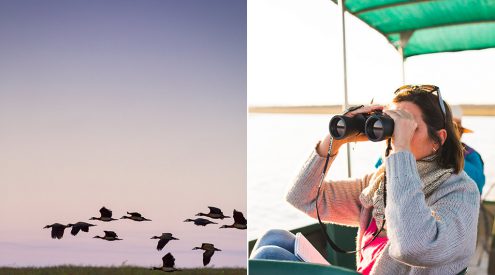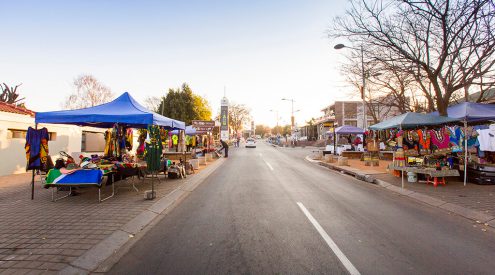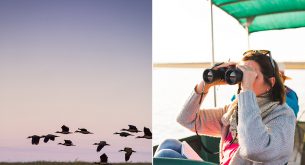Plastic pollution causes great harm to the organisms big and small that encounter it. From tiny corals to majestic whales, more than 700 marine species are known to be killed either by the ingestion of plastic or entanglement – resulting in more than 100 million animal deaths a year, that we know of.
Right now there are more than 51 trillion pieces of plastic in the ocean. That’s 51 trillion deadly hazards that animals need to avoid.
Made to be used just once, plastic can last forever in the environment. Once a plastic bag, abandoned fishing net or bottle cap has killed an animal by entanglement, strangulation, suffocation or starvation, it simply has to wait for its victim to decompose to be released back into the environment. Plastic does not decompose – it will be ready to kill again soon.
What is the death toll?
Sea turtles:
All seven species of endangered sea turtle ingest or are entangled by plastic and 50-80% of all dead sea turtles found have plastic inside them.
Alvi, a green sea turtle stranded on the South African coast, was saved by the Two Oceans Aquarium team after having a whole plastic bag pulled out of its throat.
A tiny stranded loggerhead turtle hatchling, less than a few weeks old, pooped out an entire party balloon.
The Two Oceans Aquarium’s green sea turtle Bob is one of the few sea turtles lucky enough to survive eating plastic – he was rescued after being stranded.
A Thai veterinarian saved an endangered turtle by removing a 30cm plastic bag from its digestive system.
Marine mammals:
Exactly 54% of all whales, dolphins and seals are impacted by plastic. NOAA estimates that 100,000 marine mammals are killed by plastic each year.
Vulnerable sperm whales are the species most commonly found killed by plastic debris.
A pregnant sperm whale washed up on the island of Sardinia in the Mediterranean Sea with 20kg of plastic in its stomach. Upon autopsy, it was found that the whale had still managed to eat squid, but was unable to absorb the nutrients due to the plastic waste and slowly starved.
In 2018, a juvenile sperm whale was found on the coast of Spain with 30kg of plastic in its gut.
Four sperm whales were stranded on the German coast, with stomach contents including car parts, a 13-metre long net and a bucket.
In 2013 one was found dead in the Netherlands after eating 17kg of plastic.
Another was found in California in 2008 with more than 200kg of fishing gear and plastic bags in its stomach.
The list goes on.
Fish:
A study conducted by the University of Exeter concluded that the number of sharks and rays entangled by plastic debris is largely underestimated.
A total of 114 species of marine fish are known to regularly be entangled in or ingest plastic. At least a million fish are killed this way each year.
A recent study found that 75% of all fish in the Nile River contained microplastic.
Birds:
Two-thirds of all seabird species are affected, representing 56% of all seabird species. Millions of birds are killed each year. 98% of albatrosses have ingested plastic, and 40% of their chicks died when they are fed this by their parents.
Swans at popular ponds in the UK are being harmed by discarded fishing gear.
Coral:
Several coral species have been observed starving as their digestive systems have been blocked by microplastic or their photosynthetic zooxanthellae were killed by being shaded by plastic.
Land mammals:
A duck-billed platypus was found strangled to death by a hair tie.
Japan’s famous Nara Park deer are being killed by plastic litter – one deer found with 4.3kg of plastic in its stomach.
An Indian elephant was killed by eating plastic shopping bags in India in 2018.
Eight African elephants died in Zimbabwe in 2016 after eating plastic bread bags.
Why do animals eat plastic?
Unlike humans, wild animals do not have the ability to discern plastic from ‘digestible’ materials. Simply put, if it looks like food, or smells like food, or tastes like food or behaves like food, then it must be food.
Filter-feeding animals, like whale sharks and baleen whales, can ingest plastic by accident. Plastic can release chemicals that smell like food, triggering species such as anchovies to find it.
Jellyfish-eating species, such as ocean sunfish and sea turtles, mistake plastic bags and balloon ribbons for jelly medusae.
Grazing and scavenging animals, such as cows, seagulls, dogs and camels, regularly eat plastic that has been contaminated with human food. Plastic microbeads resemble fish eggs and are often eaten by jellyfish, egg-eating fish and filter feeders.
Seabirds that skim the ocean surface while flying, such as albatrosses, cannot differentiate floating food from litter. Sonar of some animals can confuse plastic for squid and jellyfish. Hunting seabirds mistake small pieces of suspended plastic, such as cigarette lighters, for small prey fish.
How does it kill?
There is no quick death when it comes to plastic. Jagged plastic can get stuck in their throats, causing them to suffocate or prevent them from regurgitating to feed their chicks.
Plastic can accumulate in animals’ stomachs, making them feel full, stopping them from eating and resulting in starvation. Entangled marine mammals and reptiles may be unable to surface, or become exhausted from the drag and drown.
Entangled birds might drown or be unable to find food and water and thus slowly starve. Incisions caused by plastic nooses can cause infections that eventually lead to death.
What other effects are plastic having on wildlife?
Floating plastic debris is spreading invasive alien species around the world. Coral reefs that are littered with plastic are 20 times more likely to be diseased. Fish larvae are four times more likely to eat microplastic than actual food.
The above information represents just a tiny portion of the animal casualties caused by plastic. How many sharks are killed that we never find because their bodies sink? How many cows die in impoverished communities where no postmortem is ever carried out? How many ocean microorganisms are affected? We don’t know – but we know the consequences will be dire unless we take action.
We must also act locally and choose to refuse, recycle, pick reusable alternatives, and pick up litter whenever we see it.
Image credit: Unsplash
















